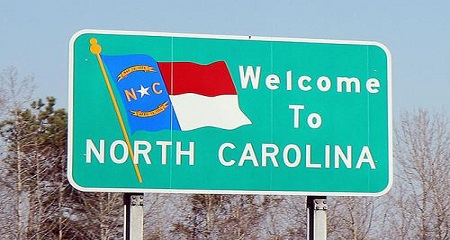Hold onto your hats, y’all – it’s going to be a wild year for North Carolina solar.
Last week, the North Carolina legislature passed a bill offering a soft landing to the official end date for the state’s 35% state tax credit. While the tax credit cliff is scheduled for December 31, 2015, new legislation will extend eligibility for projects that are “significantly complete” but not operational by the end of 2015.
When signed by Governor McCrory, the Renewable Energy Safe Harbor Act will provide some much-needed certainty to the number-four solar market in the country. As the tax credit deadline looms, the North Carolina solar industry, which employs 5,600 people and includes some 166 companies, has been racing towards the same goal: commercial operation by December 31, 2015. This drop-dead deadline combined with lengthy interconnection queues, overstretched EPC providers, and equipment delivery backlogs will likely create a bottleneck of incomplete projects in the market. The proposed reprieve will allow developers to breathe a little easier.
Unlike commence construction language, which has been discussed in the context of the federal investment tax credit (ITC), or the 5% cost incurred safe harbor seen with the 1603 cash grant program, systems in North Carolina must be “substantially complete” by January 1st, 2016 in order to qualify for the “delayed sunset.” The bill requires that systems complete a certain amount of construction and incur a certain percentage of costs by the end of the year, and complete construction within the next calendar year.
The delayed sunset provision is available to systems that apply for the extension by October 1 of this year, pay the application fee equal to the greater of $1,000 per megawatt or $5,000, and meet “substantially complete” requirements. For systems below 65MW DC capacity, that requirement is minimum incurred costs and partial construction of at least 80%. For systems greater than 65MW, that figure is 50%. The application must contain key project details including location, size, total cost, and total credit amount to be claimed. Documentation proving the required completion percentage must be provided by March 1st, 2016, and is primarily comprised of reports submitted by both an independent engineer and a CPA certifying that the cost was incurred and the completion percentage fulfilled before year’s end. And, most crucially, systems receiving an extension must be placed in service by January 1st, 2017, a full year after the original deadline of December 31, 2015.
Although the delayed sunset is nearly a done deal, bills proposing a longer term solution – a full five-year extension of the state tax credit – are still alive in the North Carolina House and Senate. The “delayed sunset” extension not only softens the landing on the expiration of the state tax credit, but also demonstrates that North Carolina legislators are not deaf to the concerns of the fast-growing, job-creating solar industry in the Tar Heel state.
Published with permission from the original publication on Sol Systems Blog By Jessica Robbins.









Comments